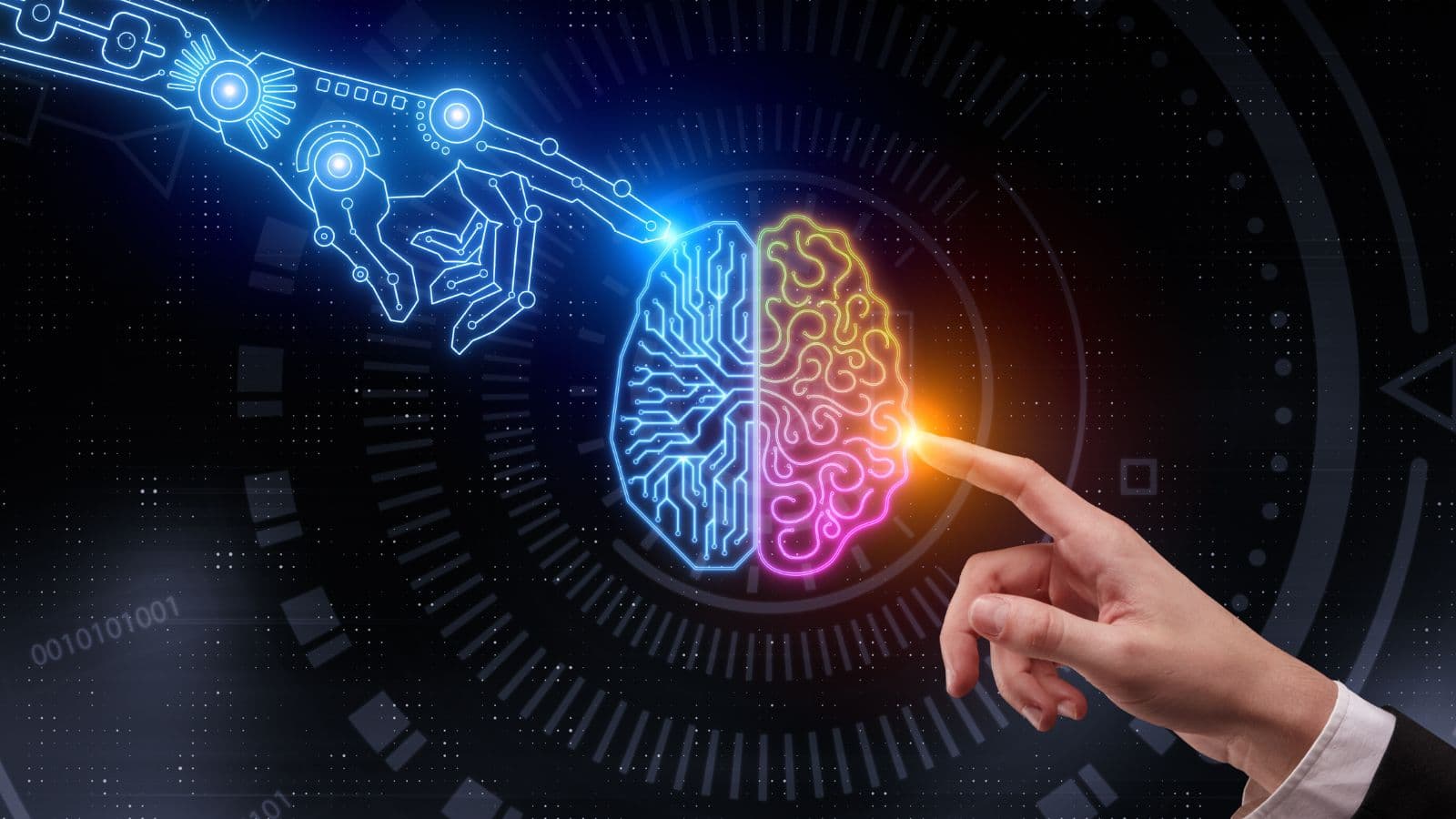Deep Dive into the Components of Agentic RAG with PT Solutions
At PT Solutions, a high-tech leader in AI Embedded Solutions and IoT Embedded Solutions, we are committed to delivering transformative technologies. One of the most groundbreaking advancements in AI today is Agentic Retrieval-Augmented Generation (Agentic RAG) — a paradigm that merges autonomous reasoning with large language models (LLMs) for smarter, more adaptable systems.
This article explores the key components of Agentic RAG, providing an in-depth look at how this framework revolutionizes modern AI workflows.
What Is Agentic RAG?

Agentic RAG enhances traditional RAG systems by introducing intelligent agents capable of dynamic decision-making, query decomposition, and multi-step reasoning. It allows LLMs to autonomously select the best retrieval pipeline, access external tools, and deliver contextually rich responses in real time.
Core Components of Agentic RAG Architecture
1. Routing Agents: Intelligent Pipeline Selection
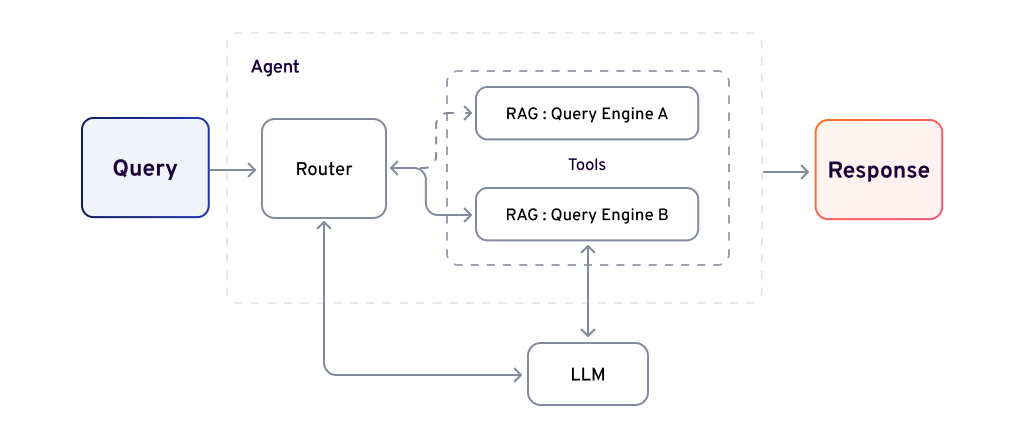
Routing agents act as the first decision layer in the Agentic RAG pipeline. Using LLMs, these agents analyze user queries and determine the optimal downstream pipeline, whether it's summarization, question-answering, or a specialized retrieval method. This enables:
Intelligent task delegation
Dynamic workflow orchestration
Improved response relevance
2. Query Planning Agent: Divide and Conquer
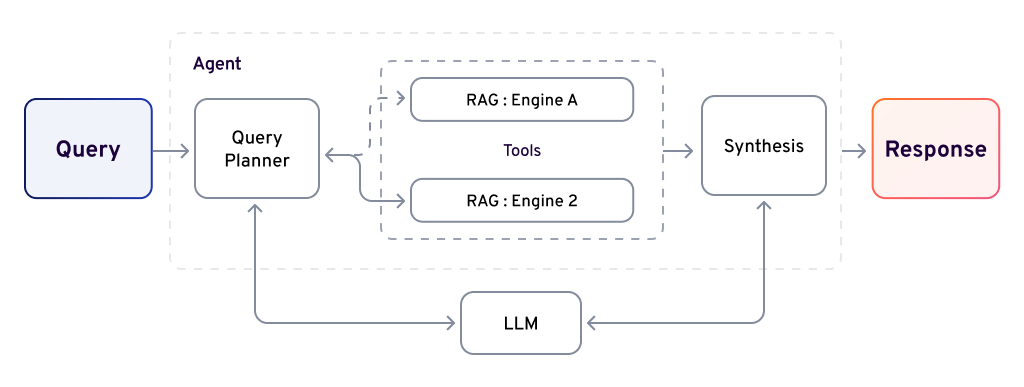
The Query Planning Agent breaks down complex queries into parallelizable sub-queries. These are routed through different RAG pipelines customized for diverse data sources. The responses are then aggregated into a unified output, ensuring complete and accurate information synthesis.
3. Tool Use Agent: Expanding Context with External Data
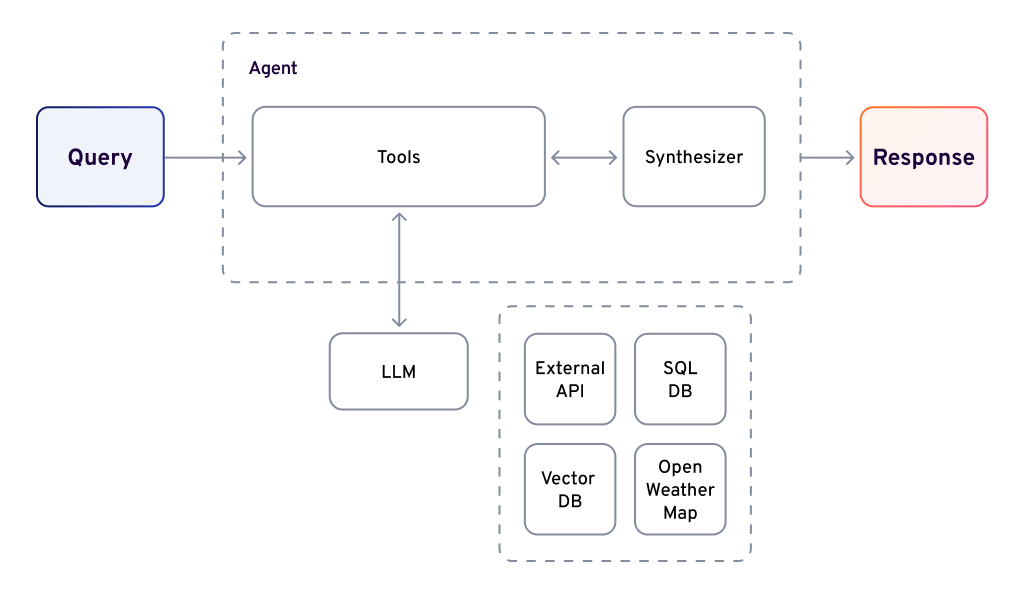
This agent enriches query context by integrating external data sources like SQL databases, APIs, or application interfaces. It acts before the LLM processes the input, enhancing semantic understanding and response precision.
4. ReAct Agent: Reasoning and Acting in Tandem

The ReAct agent represents a unified model that combines:
Routing
Query Planning
Tool Usage
It handles multi-part, sequential queries, retaining context throughout. By evaluating each action's results and iteratively refining the process, the ReAct agent excels in dynamic problem-solving.
5. Dynamic Planning and Executing Agent: Orchestrating Complexity
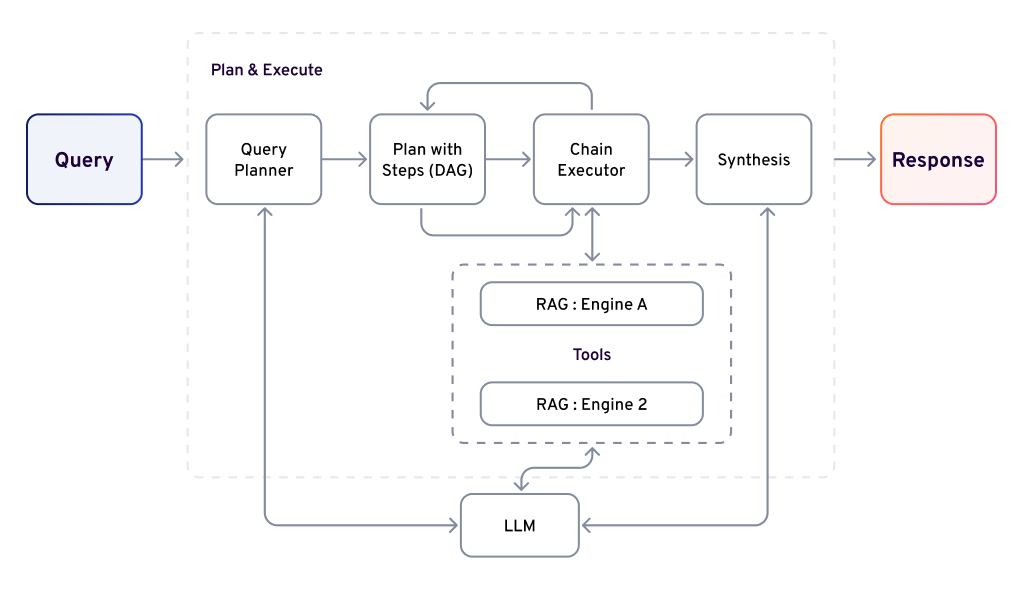
As AI use cases grow more intricate, the need for long-term planning and efficient execution becomes critical. This component separates planning from execution using a combination of:
Computational graphs (DAGs)
Execution transparency
Latency reduction and observability
An LLM-powered planner designs a step-by-step response plan, while an executor runs each phase using appropriate tools.
6. Multi-Agent Systems: Collaborative AI Intelligence
Multi-agent systems enable diverse agents with specialized knowledge to collaborate on complex tasks. These systems foster communication among agents and divide workloads, enhancing performance, scalability, and adaptability in real-time applications.
Why PT Solutions is Leading in Agentic RAG Deployment
At PT Solutions, we integrate Agentic RAG components into our AI and IoT Embedded Solutions to build systems that are:
Autonomous and scalable
Context-aware and efficient
Designed for real-world applications in healthcare, smart manufacturing, finance, and logistics
Our focus on modular agent design, tool interoperability, and adaptive workflows positions us as a trusted partner for future-proof AI deployments.
Final Thoughts
The evolution from standard RAG to Agentic RAG represents a monumental shift in the capabilities of AI systems. With agents that can reason, plan, and act, organizations can unlock unprecedented levels of automation and intelligence.
Ready to deploy intelligent Agentic RAG systems?
Contact PT Solutions today and transform your business with cutting-edge AI Embedded Solutions.

